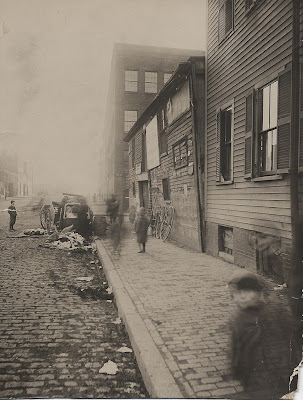 Fort Warren, George's Island (BPL Flickr photo group).
Fort Warren, George's Island (BPL Flickr photo group).A new series of photos was just released in the Boston Public Library Flickr photo group, including these images of the military batteries that once protected Boston Harbor. While Boston long had forts protecting the city, by the 1870s, they were obsolete. In the 1880s, the Presidential Endicott Commission recommended a dramatic expansion and modernization of America's coastal defense system. Between 1890 and 1910, earth and concrete batteries were constructed around Boston harbor, including the three shown here. They were manned during World Wars I and II, with most decommissioned during the Cold War.
 Fort Strong, Long Island (BPL Flickr photo group).
Fort Strong, Long Island (BPL Flickr photo group). Fort Andrews, Peddocks Island (BPL Flickr photo group).
Fort Andrews, Peddocks Island (BPL Flickr photo group). Fort Standish, Lovells Island (PBL Flickr photo group).
Fort Standish, Lovells Island (PBL Flickr photo group).For anyone interested in this subject, make sure you visit the Massachusetts Forts Wiki, which will tell you all you ever wanted to know.



